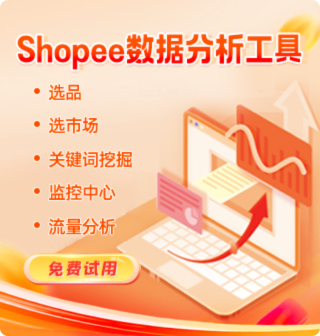-
用户147****0988
Shopee Entry Conditions: A Detailed Guide for New Sellers
Shopee is one of Southeast Asia’s fastest-growing e-commerce platforms, attracting millions of buyers and sellers across the region. For businesses and individuals looking to tap into this lucrative market, understanding the entry conditions for selling on Shopee is essential. This article provides a comprehensive overview of Shopee’s seller onboarding requirements, eligibility criteria, and practical tips to ensure a smooth start on the platform.
1. Who Can Sell on Shopee?
Shopee welcomes a wide range of sellers, from individual entrepreneurs and small businesses to larger enterprises. Generally, anyone meeting the platform’s basic requirements can open a Shopee store, provided they comply with local laws and Shopee’s policies.
The types of sellers include:
Sole proprietors and individuals
Small and medium-sized enterprises (SMEs)
Registered companies and corporations
Official brand owners and authorized distributors
2. Basic Entry Conditions to Register as a Shopee Seller
To become a Shopee seller, you must fulfill several fundamental requirements:
a) Age Requirement:
Sellers must be at least 18 years old to register an account.
b) Valid Identification:
You need to provide proof of identity such as a government-issued ID (passport, national ID card, driver’s license) to verify your identity during the registration process.
c) Contact Information:
A valid email address and phone number are required for communication, account verification, and notifications.
d) Bank Account:
To receive payouts, sellers must link a valid bank account registered under their name or company name, depending on the type of seller account.
3. Documentation for Businesses
For sellers registering as businesses, additional documentation may be required depending on the country:
Business registration certificate or trade license
Tax identification number or relevant tax documents
Company bank account details
Proof of address (utility bills, lease agreements, etc.)
These documents help Shopee verify the legitimacy of the business, ensure compliance with local regulations, and facilitate payouts.
4. Product and Category Restrictions
Shopee enforces strict policies on the types of products allowed for sale to maintain marketplace integrity and comply with regional laws:
Prohibited items include weapons, illegal drugs, counterfeit goods, endangered species products, and adult content.
Certain categories may require additional certifications or approvals (e.g., food and beverages, health supplements, cosmetics). Sellers must provide relevant licenses or quality assurance documents.
Sellers should familiarize themselves with Shopee’s product listing guidelines to avoid violations.
5. Platform-Specific Entry Conditions
Account Verification:
After registration, Shopee may require sellers to complete an account verification process, which can include identity verification, business document submission, and phone verification.
Seller Training:
Shopee often encourages or requires new sellers to complete onboarding tutorials or training modules to familiarize themselves with platform tools, policies, and best practices.
Shopee Mall (Brand Sellers):
For brands or authorized distributors wishing to join Shopee Mall (the platform’s premium official store program), stricter requirements apply such as proof of brand authorization, higher quality standards, and volume commitments.
6. Technical and Operational Requirements
Internet Access: Reliable internet connection to manage your Shopee seller account and respond to buyers promptly.
Device Compatibility: Ability to use Shopee Seller Center via mobile app or desktop browser.
Order Fulfillment Capability: Sellers must have operational capacity to handle orders, including inventory management, packaging, and shipping within Shopee’s stipulated timeframes.
Customer Service: Availability to provide timely responses to buyer inquiries and resolve disputes professionally to maintain good seller ratings.
7. Tips for Meeting and Exceeding Shopee’s Entry Conditions
Prepare Documents in Advance:
Gather all personal and business documents early to avoid delays during registration.
Understand Local Regulations:
Ensure that your products comply with national laws and import/export restrictions relevant to your target Shopee market.
Choose the Right Business Type:
Decide whether to register as an individual seller or business account based on your scale, product range, and long-term goals.
Learn Shopee’s Policies:
Thoroughly review Shopee’s seller policies, prohibited items list, and performance standards before listing products.
Set Up Efficient Logistics:
Partner with reliable couriers or use Shopee’s fulfillment services to meet delivery expectations.
8. Common Pitfalls to Avoid During Shopee Seller Registration
Submitting incomplete or incorrect documentation leading to account rejection.
Listing restricted or prohibited products without proper licensing.
Ignoring Shopee’s policies which may result in account suspension.
Underestimating the importance of customer service responsiveness.
Failing to maintain sufficient inventory, causing frequent cancellations and poor ratings.
Conclusion
Getting started on Shopee requires meeting several entry conditions that ensure a safe, trustworthy, and compliant marketplace environment. Understanding these requirements—from age and identification to product restrictions and operational readiness—helps sellers prepare effectively for onboarding.
By adhering to Shopee’s standards and investing in well-organized store management, sellers can not only gain access to a vast customer base but also build a sustainable and reputable online business within the vibrant Southeast Asian e-commerce ecosystem.

